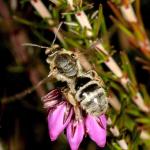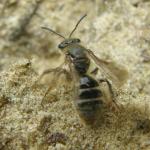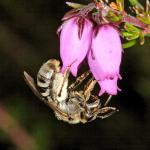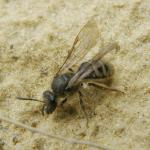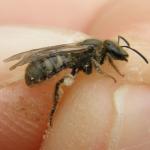One of the larger halictine bees of the British Isles, the male has a distinctive blood-red tip to the abdomen. Identification keys and general information are given in Perkins, R C L (1922).
Known from southern England and Wales. It is associated with sandy soils, especially if these support heaths (Erica spp.) and heathers (Calluna spp.), although females are far too long-lived to be oligolectic on these plants. Known from the Channel Islands (Jersey). There are a number of very old (and doubtful) records from the Scottish border region, from where it has not been reported for over a century. Widespread in southern and central Europe: north-western Netherlands and Germany, south to Iberia and Corsica, east to Greece.
This species is not regarded as being threatened. However, the current map shows a highly restricted range which suggests its status should be reviewed.
Associated with heathy vegetation on sandy soils.
Females initiate nests during May, new males and females are produced during August and September. As this is a solitary species, the flight period of females is extraordinarily long.
A solitary species but may nest in dense aggregations in quite loose, but not continually disturbed, sandy soil which is exposed to the sun.
Bell heather (Erica cinerea), cross-leaved heath (Erica tetralix), dandelion (Taraxacum officinale), forget-me-not (Myosotis sp.), hawk's beard (Crepis sp.), heather (Calluna vulgaris) and pine (Pinus sp.).
It is reported that this species is cleptoparasitised by Sphecodes reticulatus (Morice 1901a) but this requires confirmation. It is possible that Sphecodes pellucidus also attacks this bee (Vegter 1993).
2002


